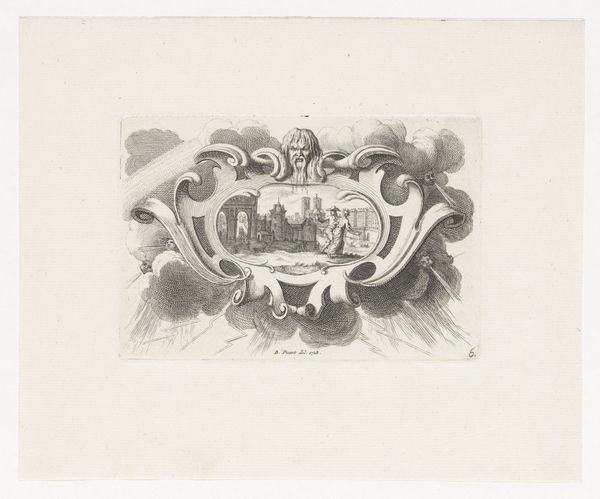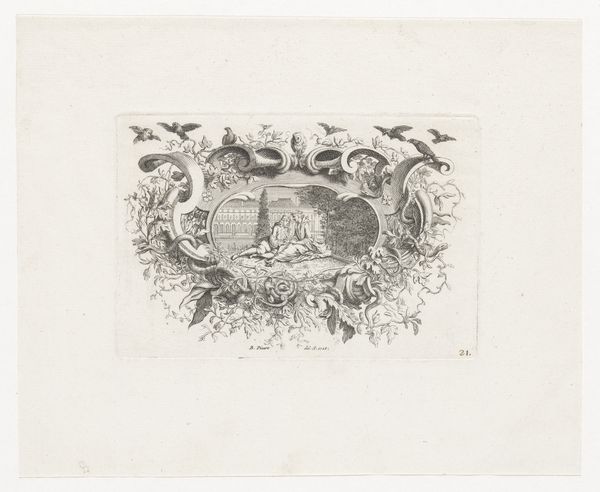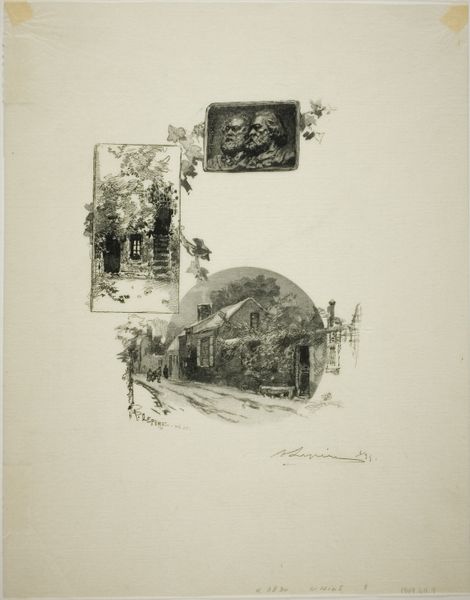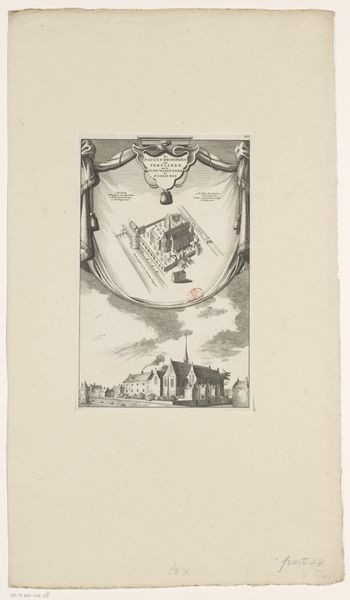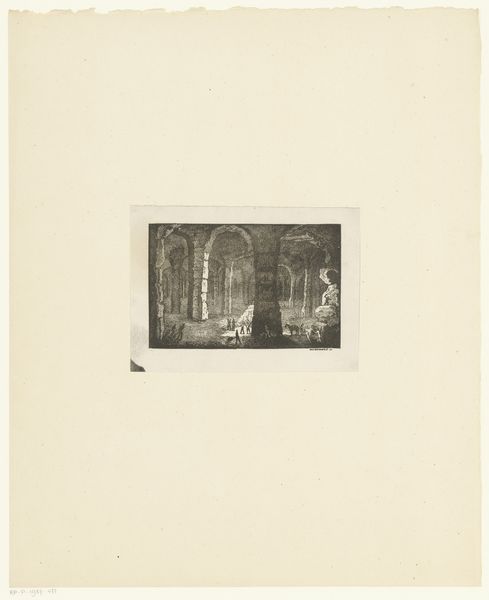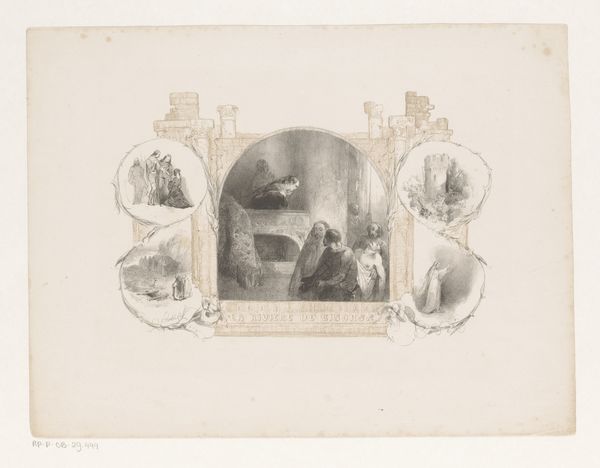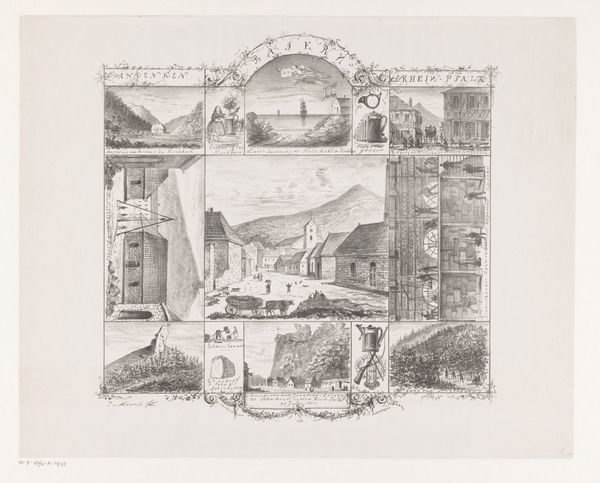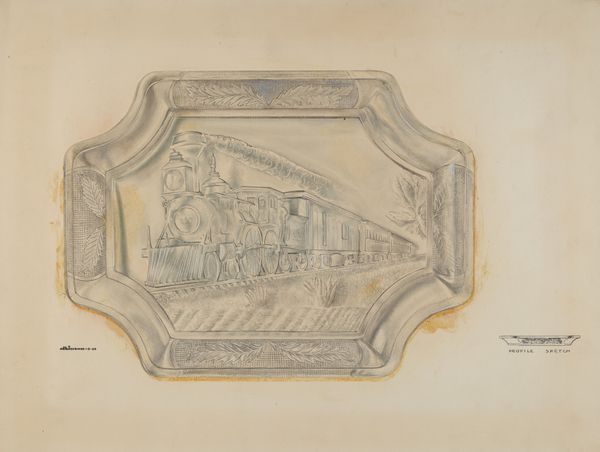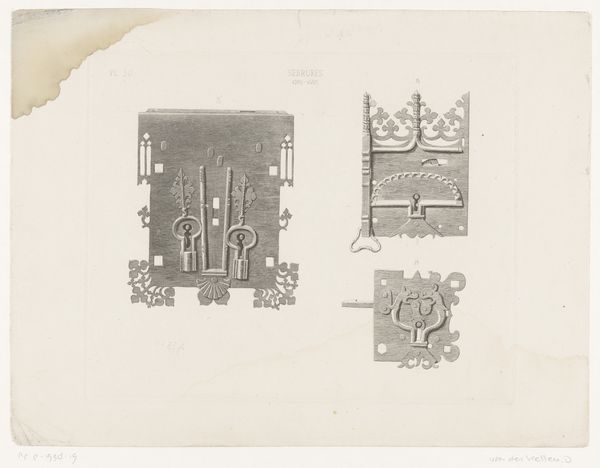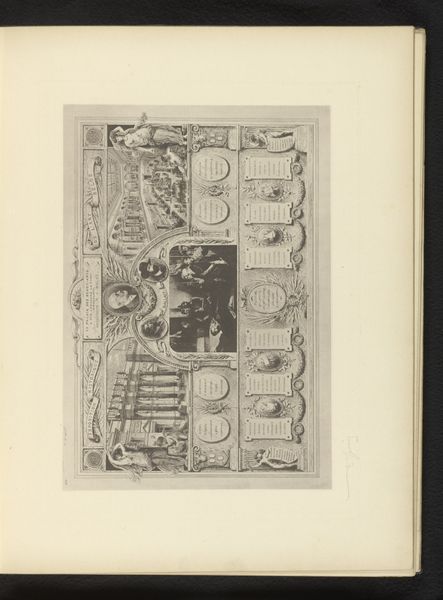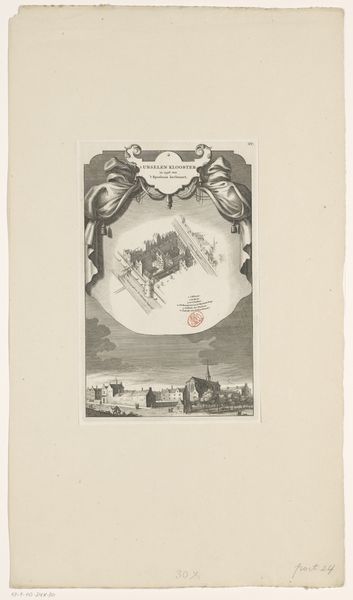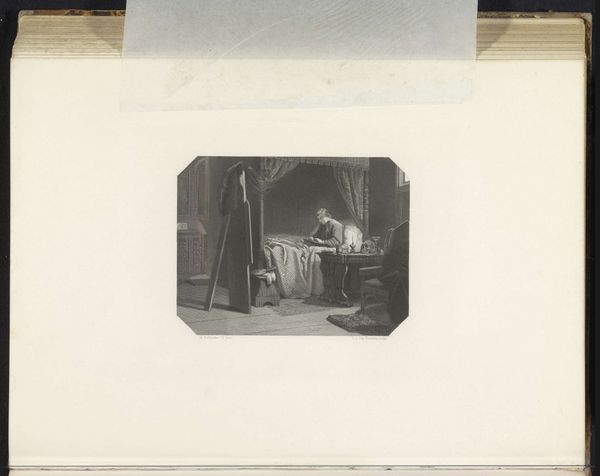
drawing, pencil
#
drawing
#
negative space
#
pencil sketch
#
landscape
#
form
#
pencil drawing
#
geometric
#
pencil
#
line
#
cityscape
#
academic-art
Dimensions: height 190 mm, width 286 mm
Copyright: Rijks Museum: Open Domain
Curator: Before us is "Diverse grafmonumenten," or "Various Grave Monuments," a pencil drawing made between 1822 and 1895, currently residing here at the Rijksmuseum. Editor: It feels…quiet. A hushed reverence permeates the architectural forms, though rendered in delicate, almost ethereal pencil lines. What exactly are we looking at? Curator: Tetar van Elven presented a series of architectural studies, possibly of actual grave monuments, within ornate frames, themselves forming a larger, cohesive design. Notice how the medium itself, pencil, lends to its intimate character. It emphasizes the study, the drafting. Editor: Intimate indeed. Considering this was created during a time of significant social upheaval, especially regarding class and burial rights, I can’t help but wonder, who were these monuments for? Who was being memorialized with such architectural grandeur, while others were left in unmarked graves? Curator: The artist’s labor is visible in every stroke. You can see the texture of the paper, the careful shading, the precise linework needed to create this sense of depth. The artist has transformed ordinary graphite and paper into representations that, if built in monumental form, would require tremendous resources. Editor: Precisely. These images, although 'just' a drawing, represent monumental ideas and realities rooted in structural power. Was Van Elven simply documenting, or perhaps subtly commenting on, these social hierarchies through his artistic practice? I'm particularly interested in how period artistic training reinforces class. Curator: It's tempting to speculate, especially with such a subdued image, but the function may have been purely academic, a study of architectural forms and artistic skill. After all, during that time there were distinct classes of artists and art production. The use of drawing was so much part of a student's means to demonstrate understanding and command of material culture. Editor: And maybe it's in this combination – the ghostly rendering and the grandeur depicted, the clear medium, along with a time fraught with conflict – that gives it such quiet power to make us reflect today. Curator: Indeed. What initially presents itself as an understated exercise, ends up a really interesting study on form and craftsmanship.
Comments
No comments
Be the first to comment and join the conversation on the ultimate creative platform.
